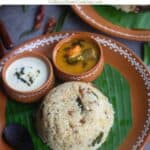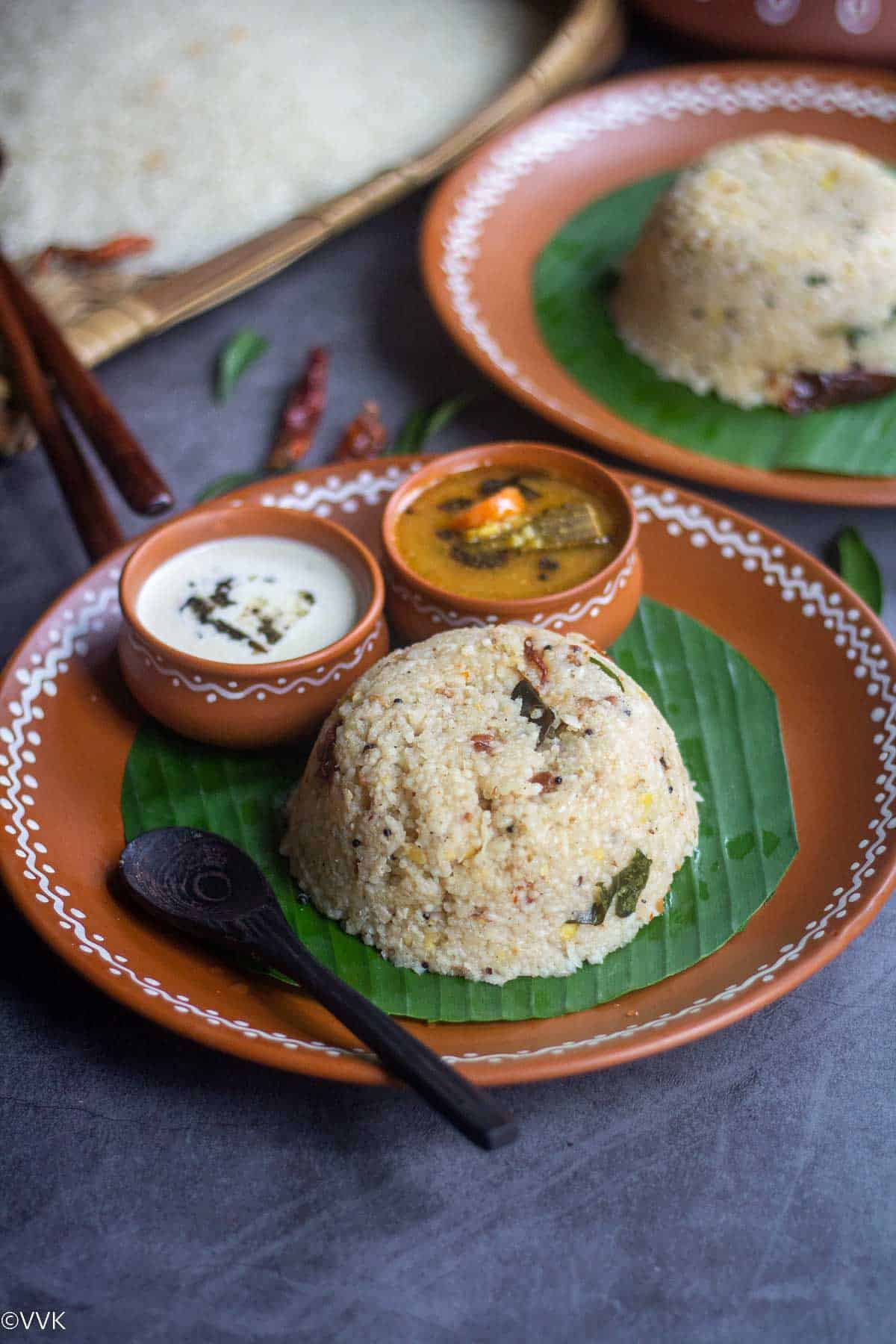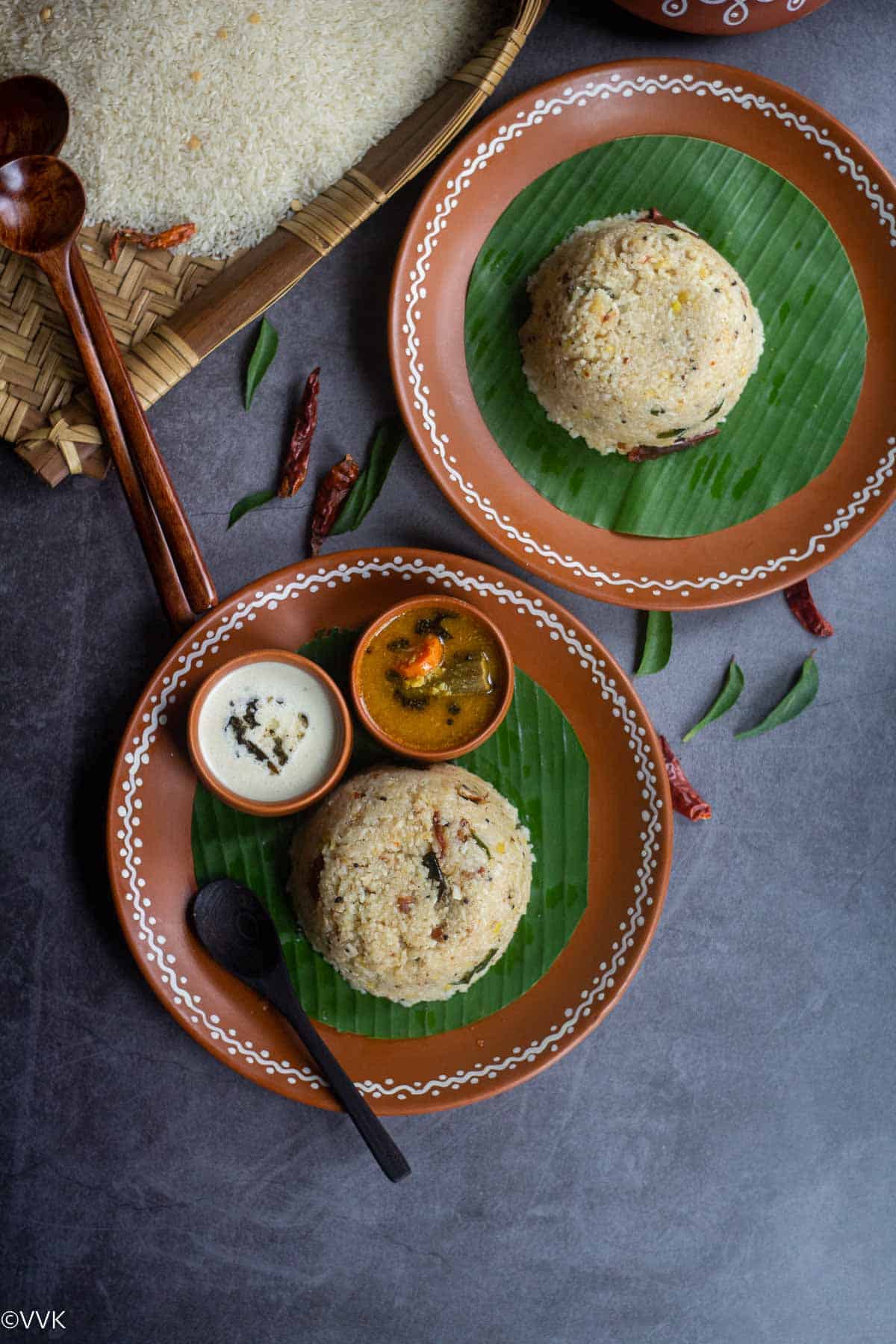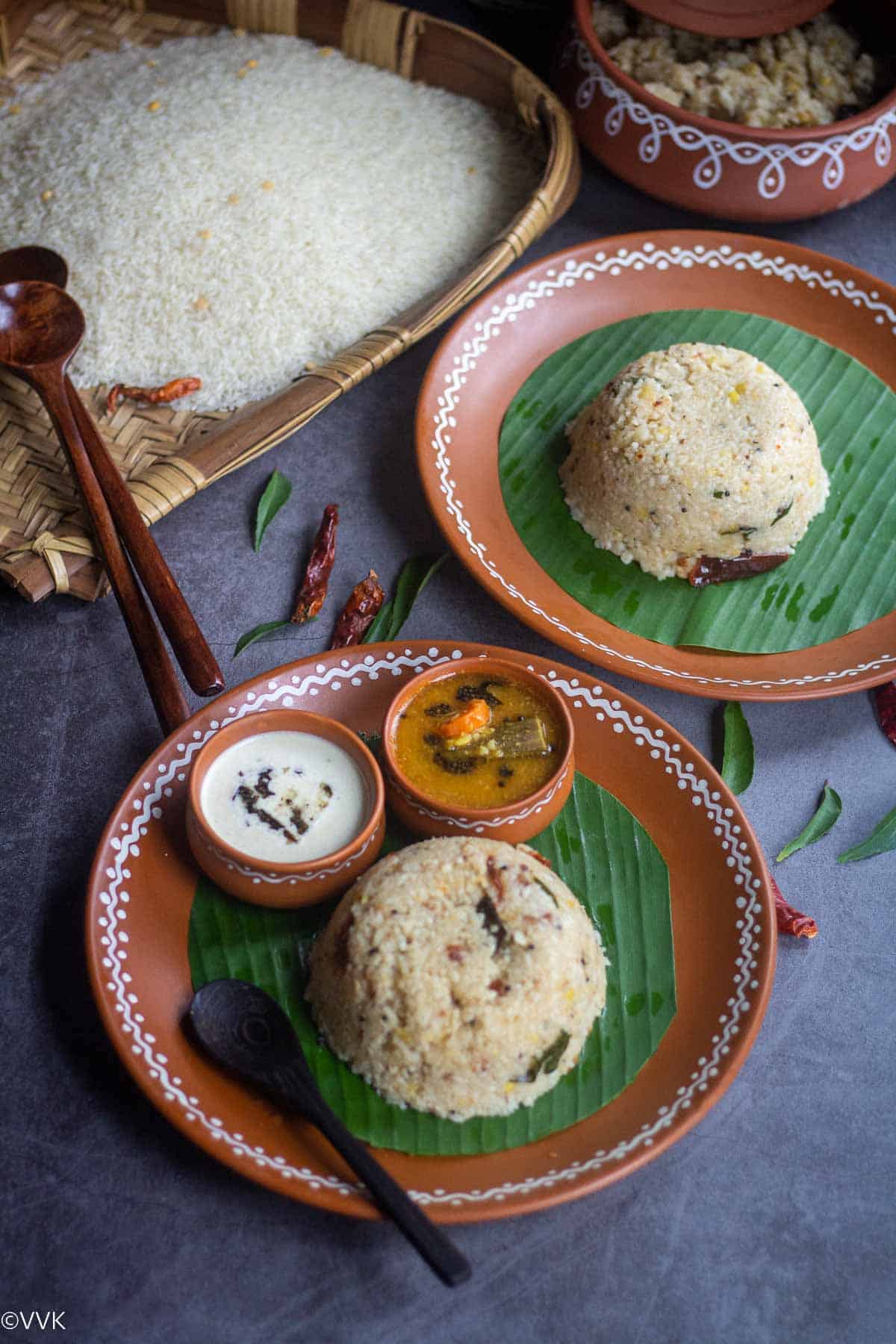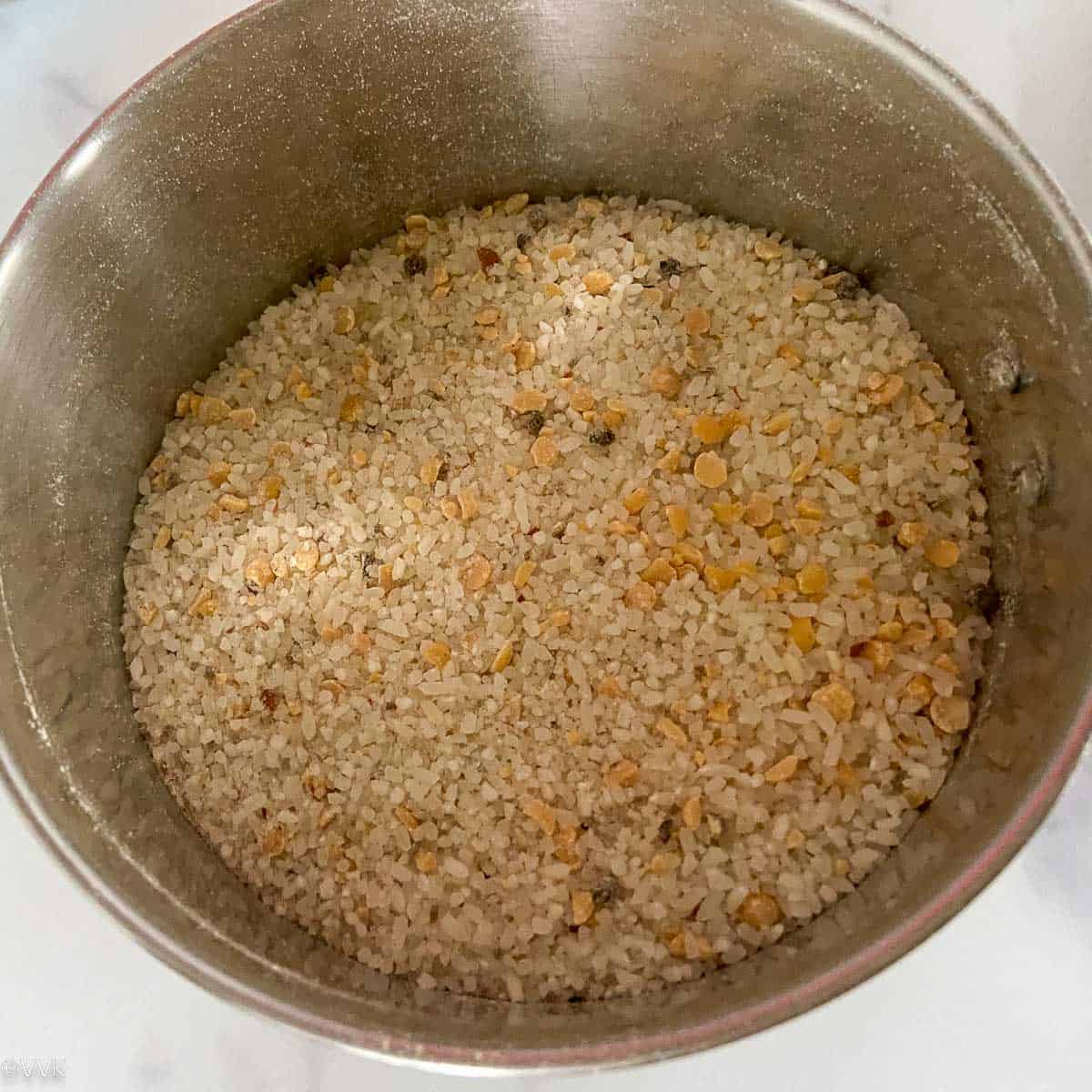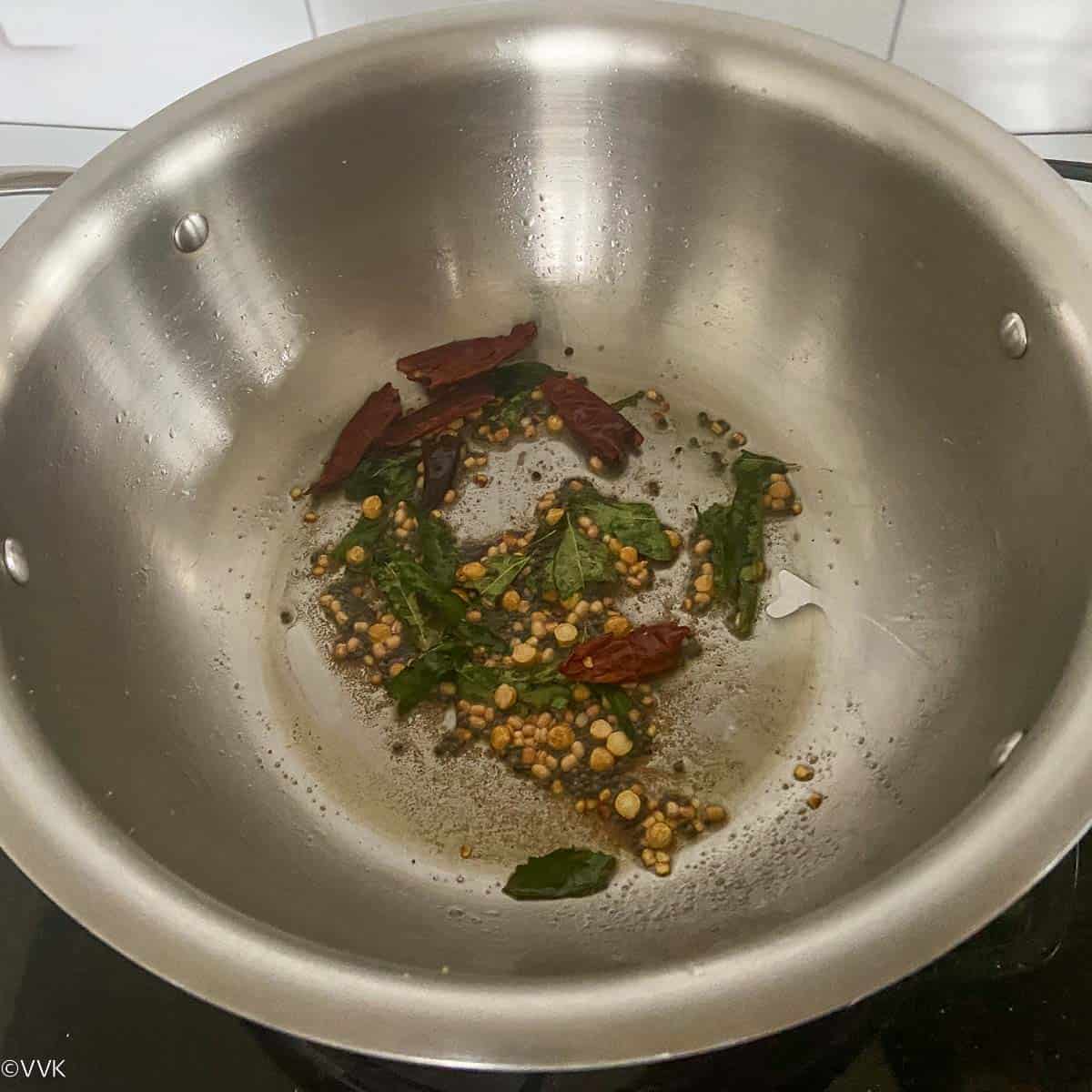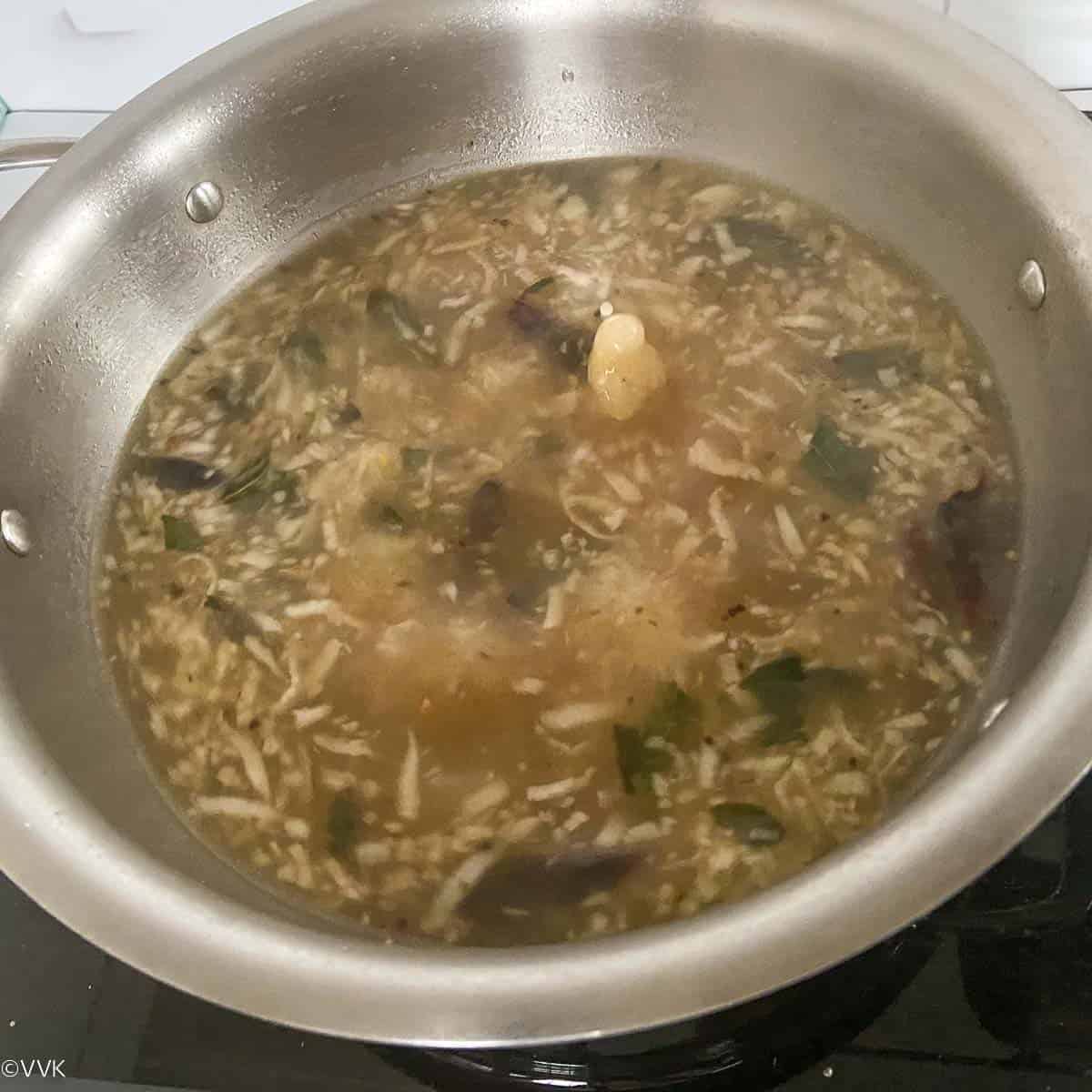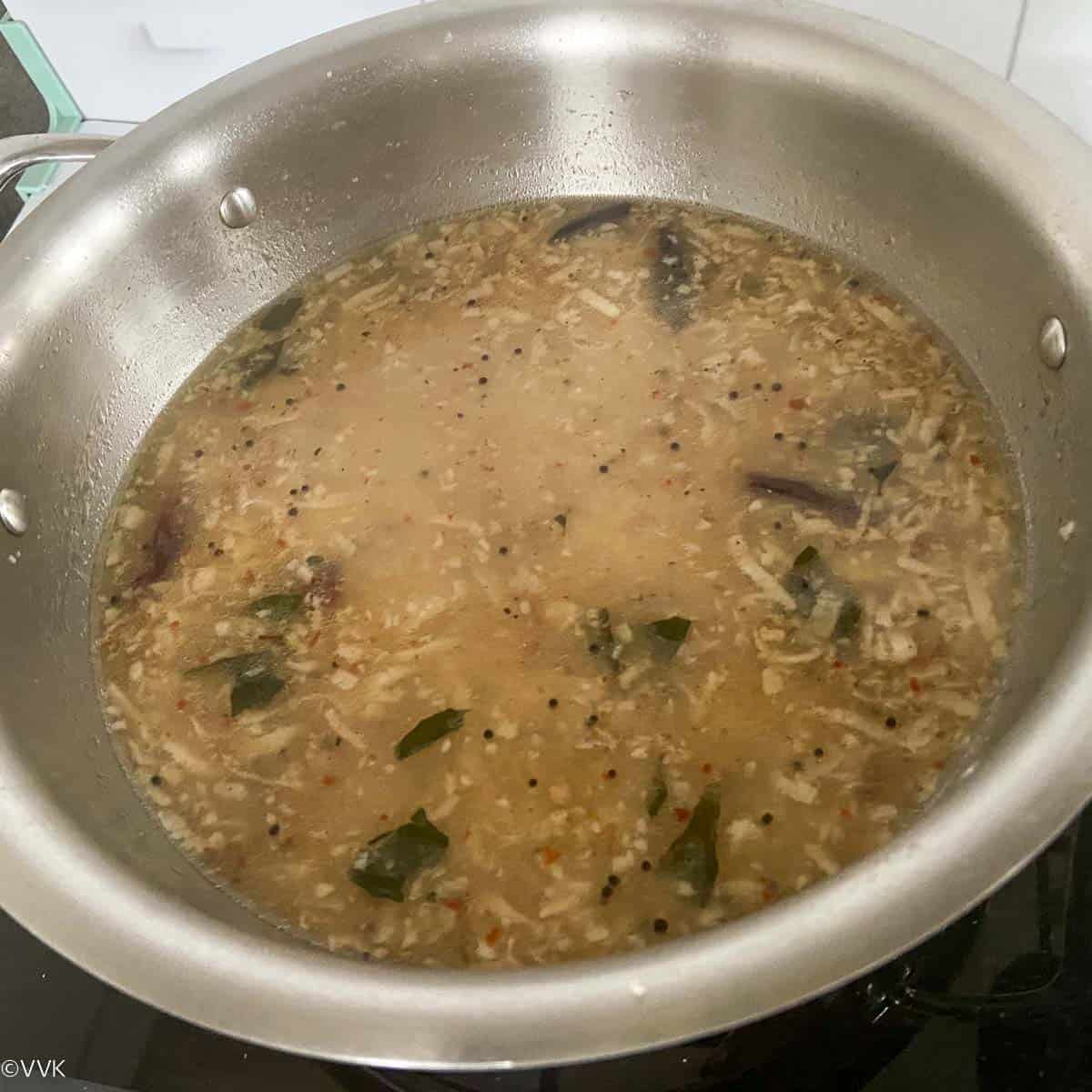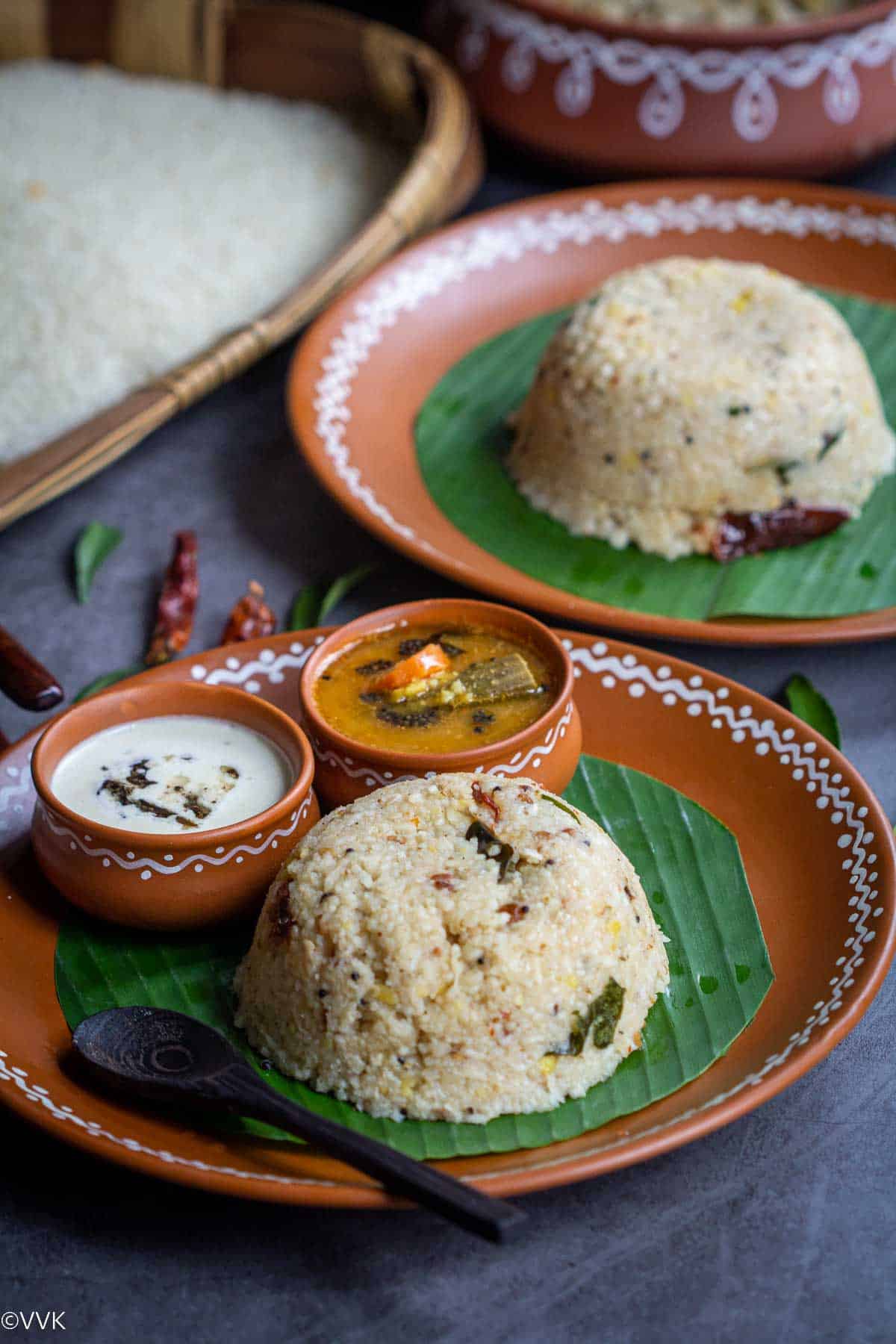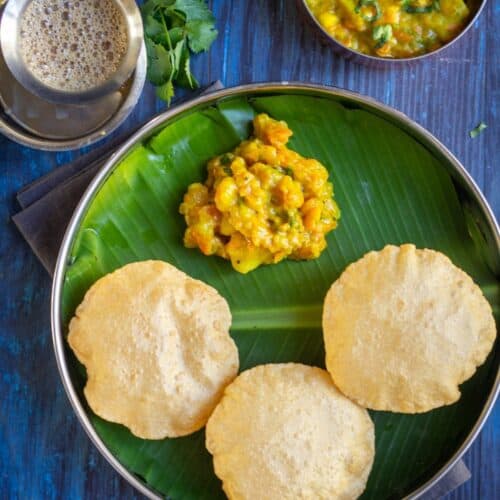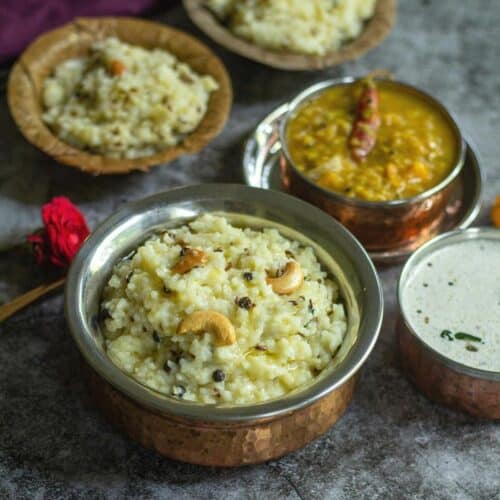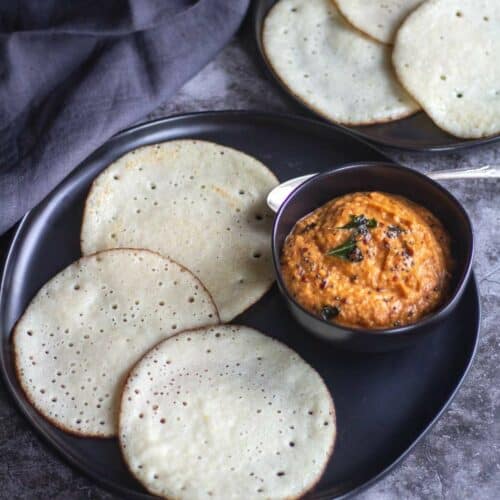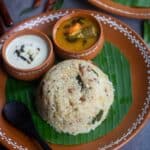The coconut oil tempering and adding grated coconut make it oh-so-delicious, and it’s a great breakfast or dinner option. Check out how to make this delicious arisi upma with detailed step-wise pictures.
Upma varieties
Upma, the savory dish, is a staple breakfast/dinner option in South Indian households. While you can find rava kichadi on the restaurant menu, there are so many other varieties you can find only in South Indian households, like semiya upma, godumai rava upma, puli upma, aval upma, etc. This arisi upma is one such variety prepared with rice and toor dal. You can find similar variations of this upma in the other South Indian states too. They make this with rice rava. In Telugu cuisine, you can find uppudu pindi made with rice rava and moong dal. In Kannada, it is called akki tari or akki uppitu.
Rice or rice rava
We make this in our house with rice, not rice rava. I will share the rice rava upma soon. But today, let’s check how to make this with raw rice. IMO, Arisi upma is a mix between ven pongal and milagu sadam. I usually grind rice, toor dal, cumin seeds, and pepper and prepare the upma. When we were in Periyakulam, Amma prepared this with kurunai arisi (broken rice). During the process of husk removal, rice breaks, and they collect these broken rice, which we call kurunai. You can use kurunai arisi for making idli-dosa batter too. For this recipe, I am going with regular raw rice. I have tried this recipe with boiled rice, also. I learned this recipe from my MIL. The secret ingredient in her Arisi Upma is the addition of coconut oil and grated coconut. Those two ingredients take this recipe to the next level, and the coconut and coconut oil clearly distinguishes it from savory pongal. (ven pongal). This upma is perfect for breakfast, brunch, or dinner.
Ingredients required
To pulse together: We pulse rice, toor dal, dried red chilies, cumin seeds, and black pepper into a rough mix, and that’s our rava mix. To temper – We need coconut oil, mustard seeds, urad dal, chana dal, asafoetida, grated coconut, and curry leaves. Apart from these ingredients, we also need salt and water. Please check the recipe card for exact measurements.
Dietary specifications & serving suggestions
This arisi upma is naturally vegan and nut-free. Skip the asafoetida or use gluten-free asafoetida for a gluten-free version. You can serve this upma with coconut chutney or peanut chutney and sambar. Gothsu, gojju, and puli inji also pair well with this upma.
How to make arisi upma
Pulse the rice, toor dal, one red chili, black pepper, and cumin seeds together. It should be coarse and half-ground, and ensure you don’t grind it smoothly like flour. Use the pulse mode and shake it every two pulses to get an evenly ground rice mix.
Heat a pan or kadai and add the coconut oil. When the oil is hot, add the mustard seeds, urad dal, chana dal, red chilies (broken into two pieces), asafoetida, and ten curry leaves. Let the mustard seeds splutter, and the urad and chana dal turn light golden brown.
Then add the grated coconut and fry for two minutes.
Add the 4 cups of water and salt and let it come to a rolling boil.
Once the water starts boiling, add the coarse rice mixture. Make sure you stir while adding the rice mix. Mixing while adding ensures that there are no lumps.
Mix well and reduce the heat to medium-low and let it cook for 3 to 4 minutes. Now mix well and at this stage, if required, add the remaining water (not more than 1 cup) and mix again. Reduce the heat to low, cover, and cook until the rice is cooked. It will take approximately 10 ~12 minutes. This timing is a rough estimate. Please check the doneness of the rice and turn off the heat accordingly. 95 to 98% of doneness is sufficient too, because will cover and let the upma sit for 5 minutes and that’s ensure 100% doneness.
Add the remaining curry leaves, optionally 1 tsp of coconut oil, and cover the upma with a lid. Wait for five minutes, then remove the lid, mix well, and serve with your chosen side.
Recipe Notes
Stirring while adding the rice to boiling water is crucial for avoiding lumps. Adjust the spice and salt to taste. After cooking is complete, cover the rice upma with a lid and let it sit for a few minutes to ensure the doneness of the rice thoroughly.
VVK Tips
I have tried both the pressure cooker method and the open-pot method. For the pressure cooker method, after tempering and adding water, add the ground mixture and cook for two whistles. The water and cooking time differ depending on the rice (old or new). So in this method, ensure you have enough water so it doesn’t get browned, and once the rice is done, turn off the heat. Make sure you pulse the rice, dal, and spices. Refrain from grinding it at once. Also, shake the mixer jar after every two pulses so that the rice grains break evenly.
South Indian Breakfast Specials
PS – If you try this arisi upma, please don’t forget to comment and rate this recipe. If you have any questions, please leave a comment, and I will get to it asap. Make sure to follow me on my Pinterest for more healthy and delicious ideas! Follow me on Instagram or join my Facebook Group for more gardening and recipe updates.
📖 Recipe
Update notes: Earlier posted in 2017. Now updated the recipe with recipe card, new step-wise pics and new pictures.
